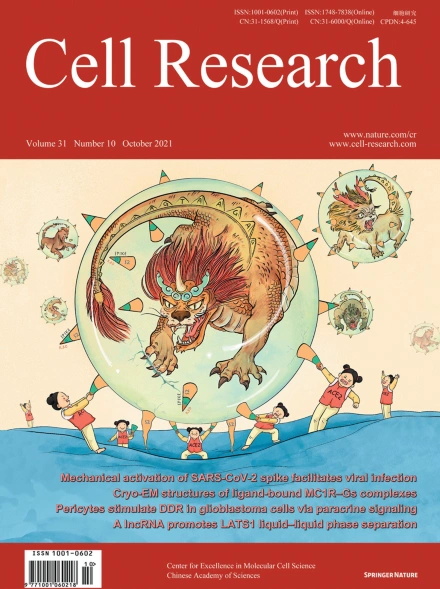
Advanced Search
Submit Manuscript
Advanced Search
Submit Manuscript
Volume 31, No 10, Oct 2021
ISSN: 1001-0602
EISSN: 1748-7838 2018
impact factor 17.848*
(Clarivate Analytics, 2019)
Volume 31 Issue 10, October 2021: 1088-1105
A phosphatidic acid-binding lncRNA SNHG9 facilitates LATS1 liquid–liquid phase separation to promote oncogenic YAP signaling
Rui-Hua Li1,† , Tian Tian2,† , Qi-Wei Ge1,3,† , Xin-Yu He1 , Cheng-Yu Shi1 , Jun-Hong Li1 , Zhen Zhang1 , Fang-Zhou Liu1 , Ling-Jie Sang1 , Zuo-Zhen Yang1 , Ya-Zhuo Liu1 , Yan Xiong4 , Qingfeng Yan1 , Xu Li5 , Huai-Qiang Ju2 , Jian Liu6,7 , Liang-Jing Wang3 , Jian-Zhong Shao1 , Wenqi Wang8 , Tianhua Zhou3,9,10 , Aifu Lin1,10,11,12,*
1MOE Laboratory of Biosystem Homeostasis and Protection, College of Life Sciences, Zhejiang University, Hangzhou, Zhejiang, ChinaLong noncoding RNAs (lncRNAs) are emerging as a new class of important regulators of signal transduction in tissue homeostasis and cancer development. Liquid–liquid phase separation (LLPS) occurs in a wide range of biological processes, while its role in signal transduction remains largely undeciphered. In this study, we uncovered a lipid-associated lncRNA, small nucleolar RNA host gene 9 (SNHG9) as a tumor-promoting lncRNA driving liquid droplet formation of Large Tumor Suppressor Kinase 1 (LATS1) and inhibiting the Hippo pathway. Mechanistically, SNHG9 and its associated phosphatidic acids (PA) interact with the C-terminal domain of LATS1, promoting LATS1 phase separation and inhibiting LATS1-mediated YAP phosphorylation. Loss of SNHG9 suppresses xenograft breast tumor growth. Clinically, expression of SNHG9 positively correlates with YAP activity and breast cancer progression. Taken together, our results uncover a novel regulatory role of a tumor-promoting lncRNA (i.e., SNHG9) in signal transduction and cancer development by facilitating the LLPS of a signaling kinase (i.e., LATS1).
https://doi.org/10.1038/s41422-021-00530-9